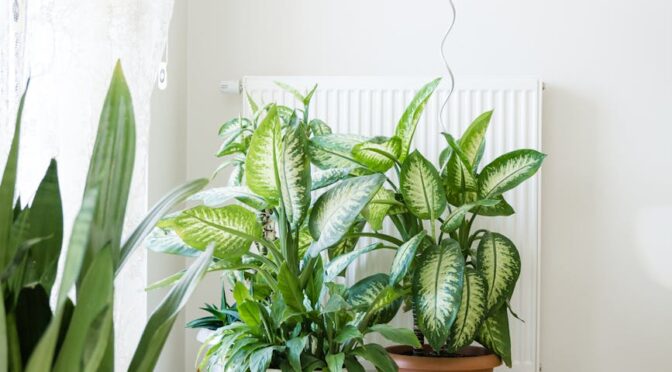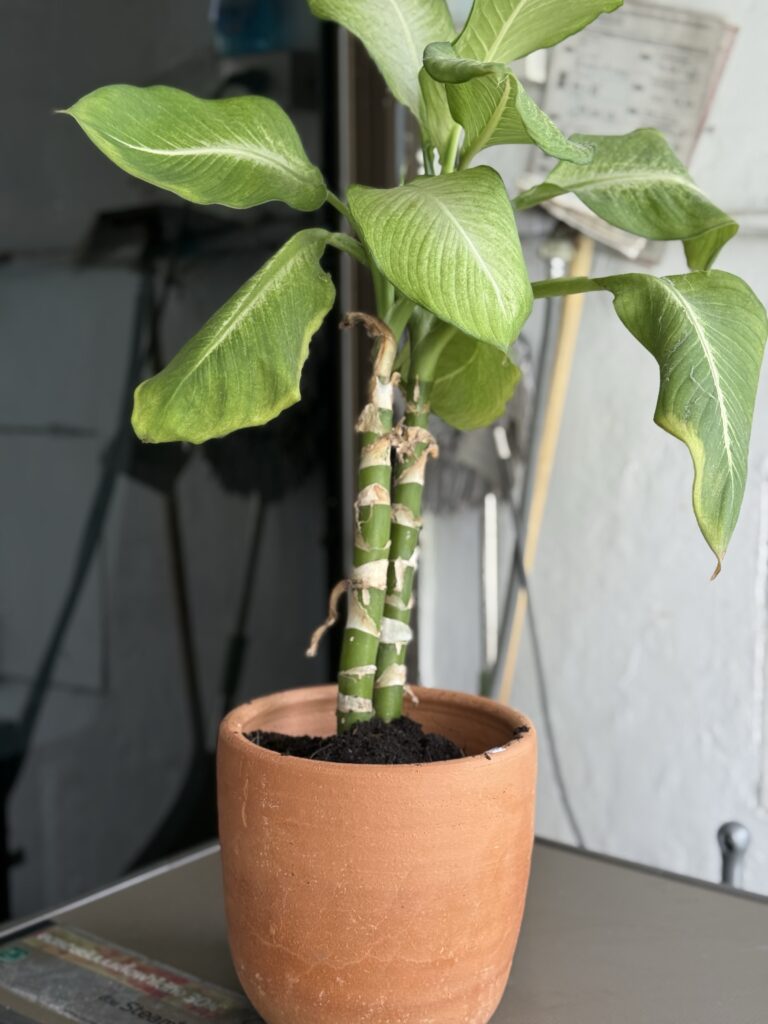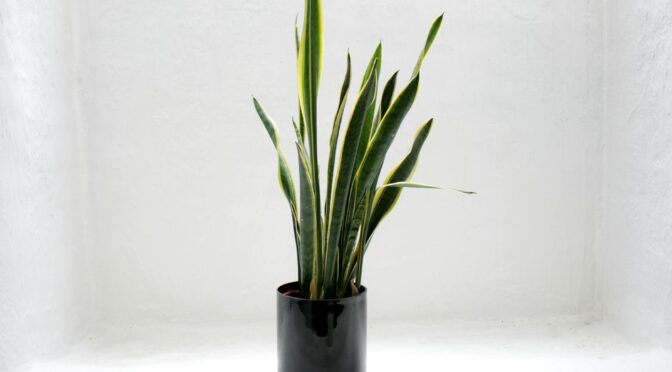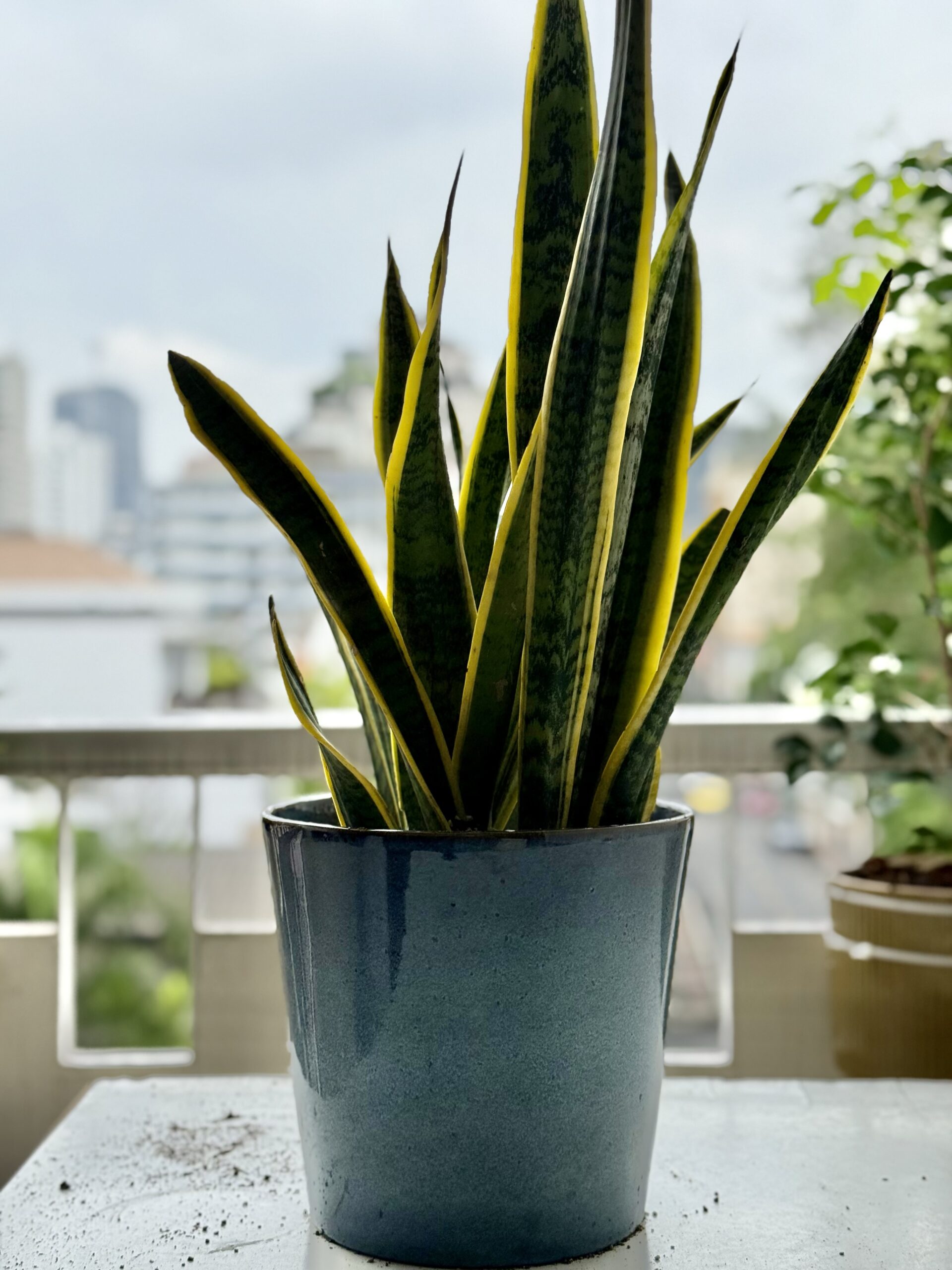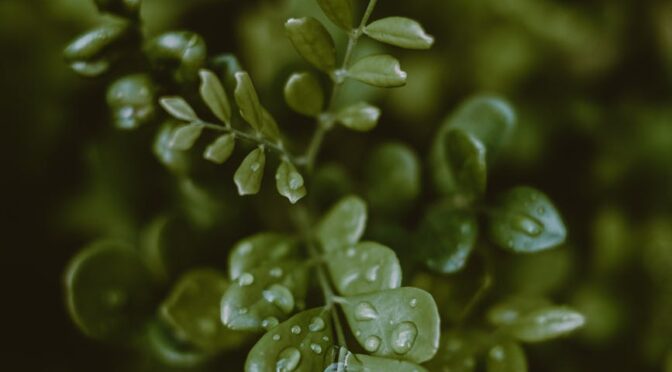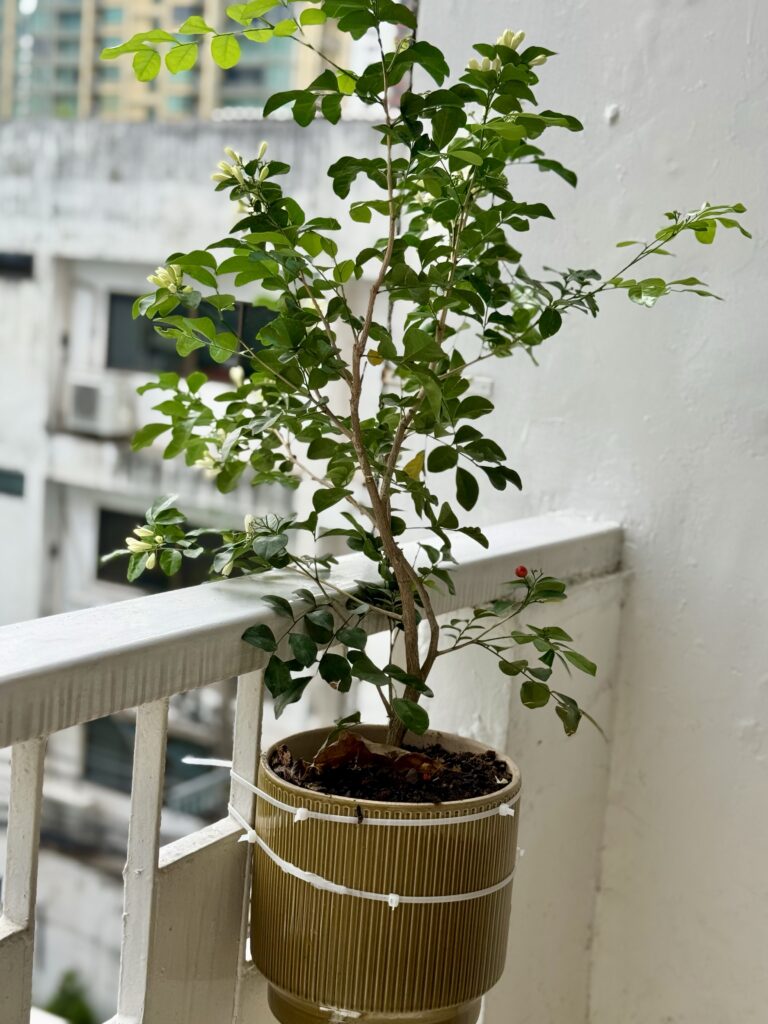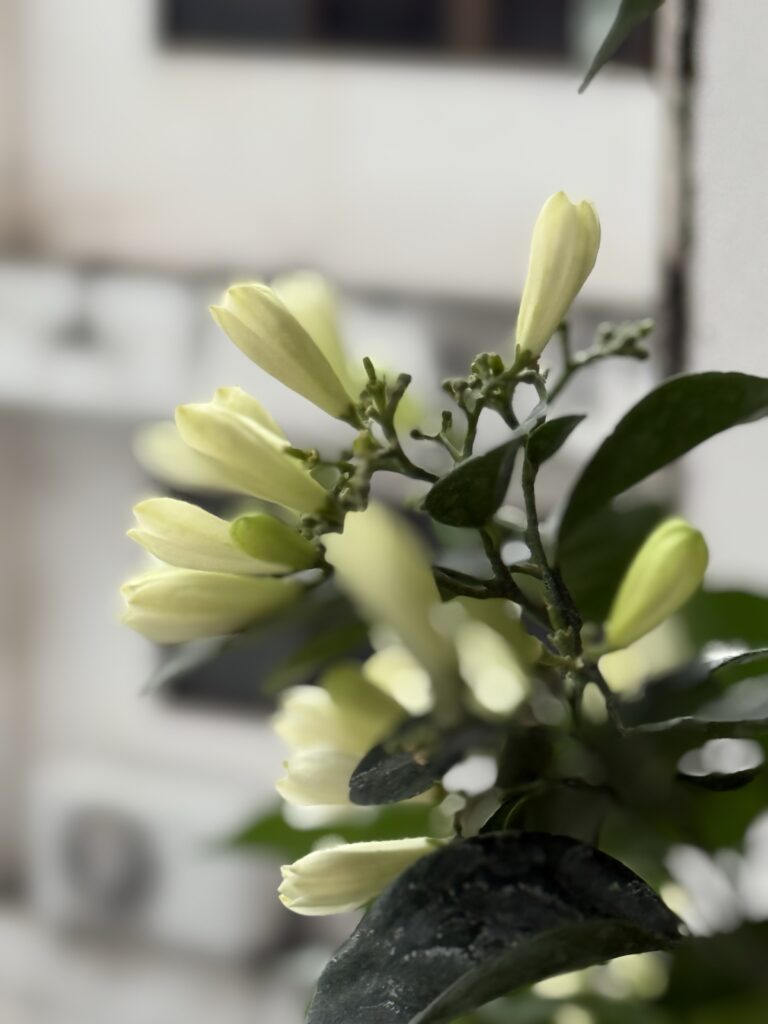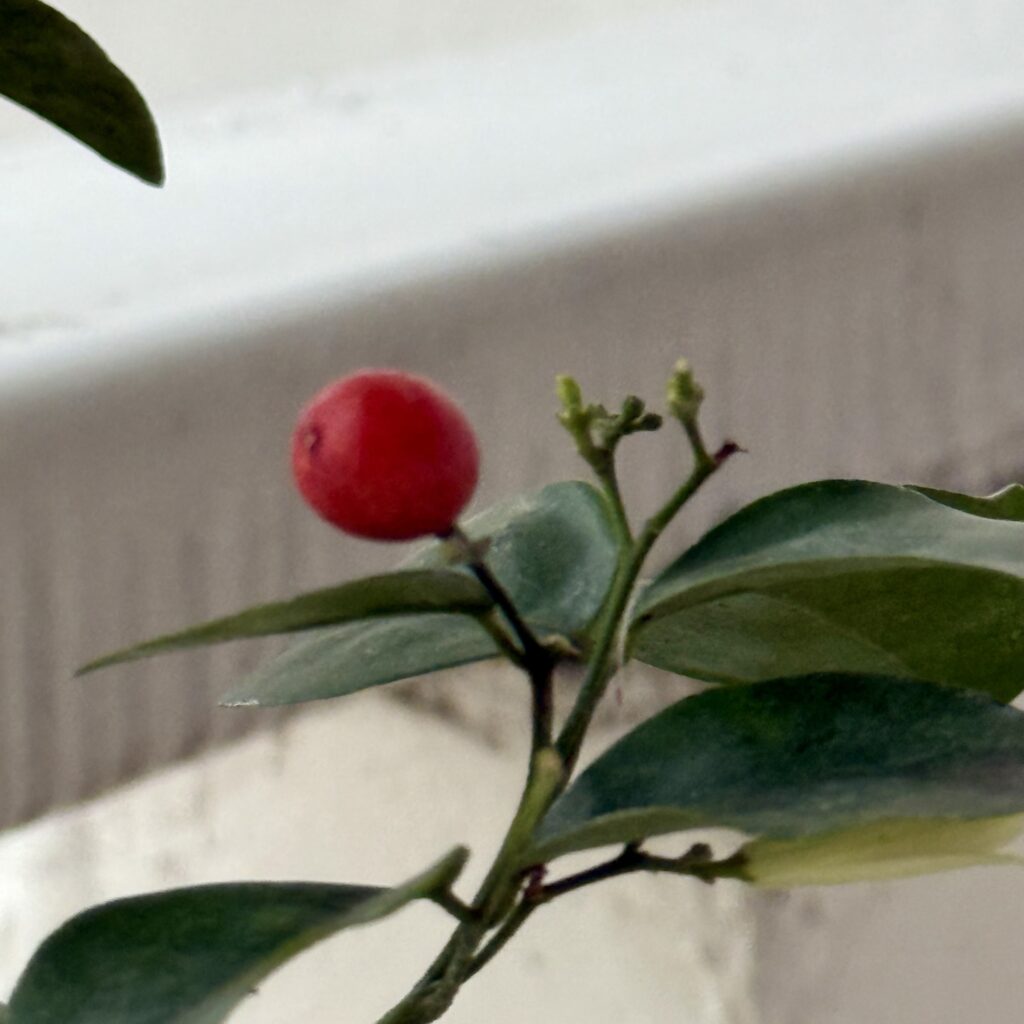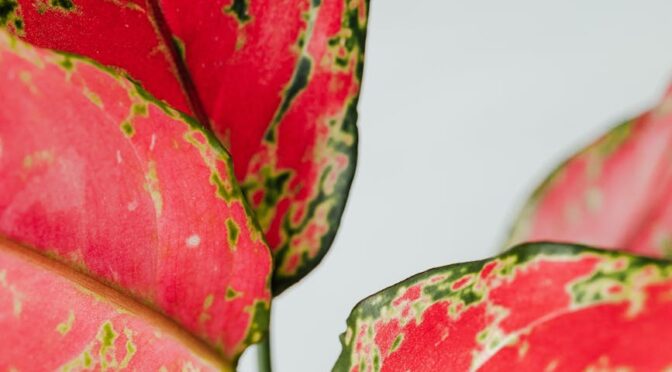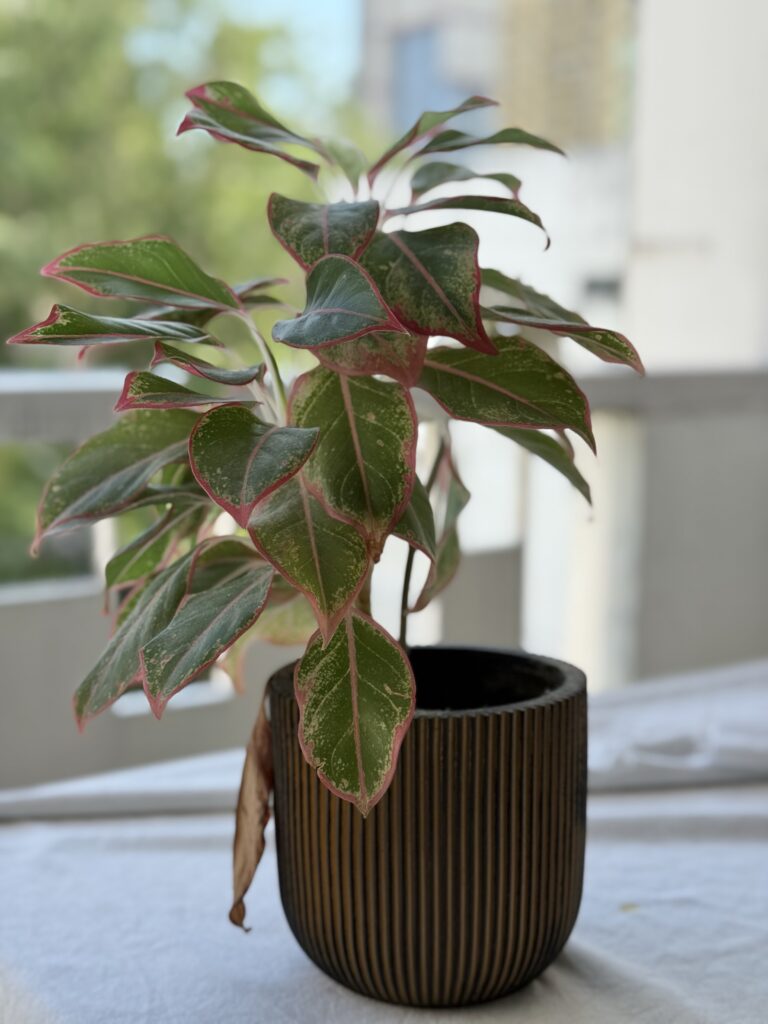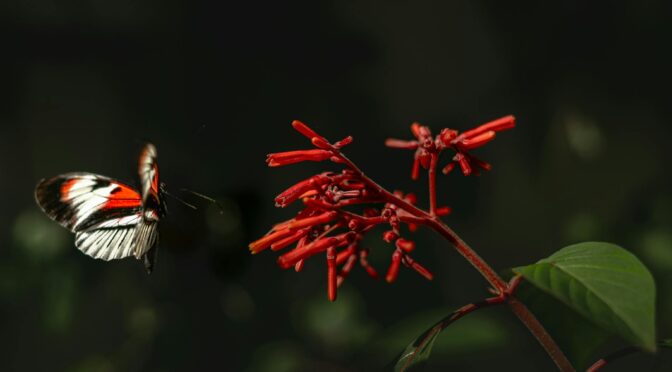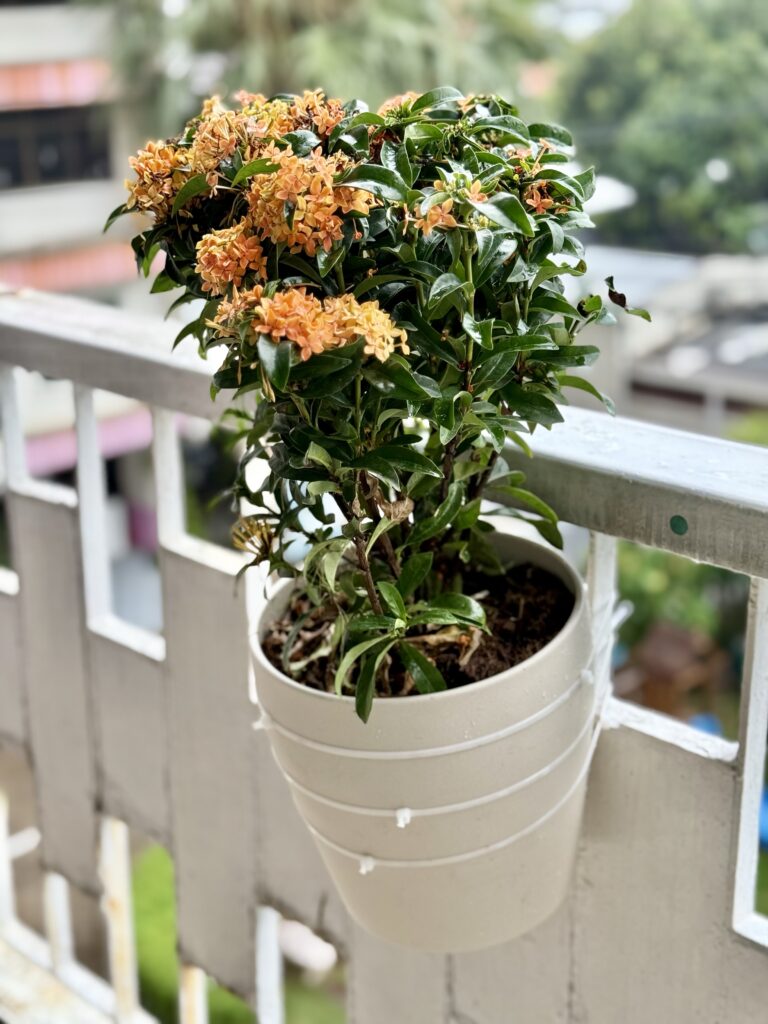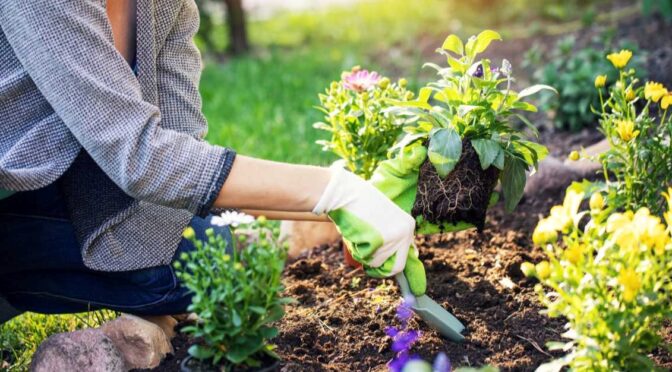Continuing my series, this post is about my Parlour Palm.
The Parlour Palm, scientifically known as Chamaedorea elegans, is a popular houseplant appreciated for its graceful, feathery fronds and adaptable nature.
The Parlour palm was discovered in Central America and brought back to the United States, where it became a popular indoor palm.
Parlour palms grow in attractive clumps with light-textured foliage cloaking thin trunks. These slow growers can take years to reach full height (2 to 6 feet indoors and 6 to 16 feet outdoors).
My fondness for Palms is already common knowledge.
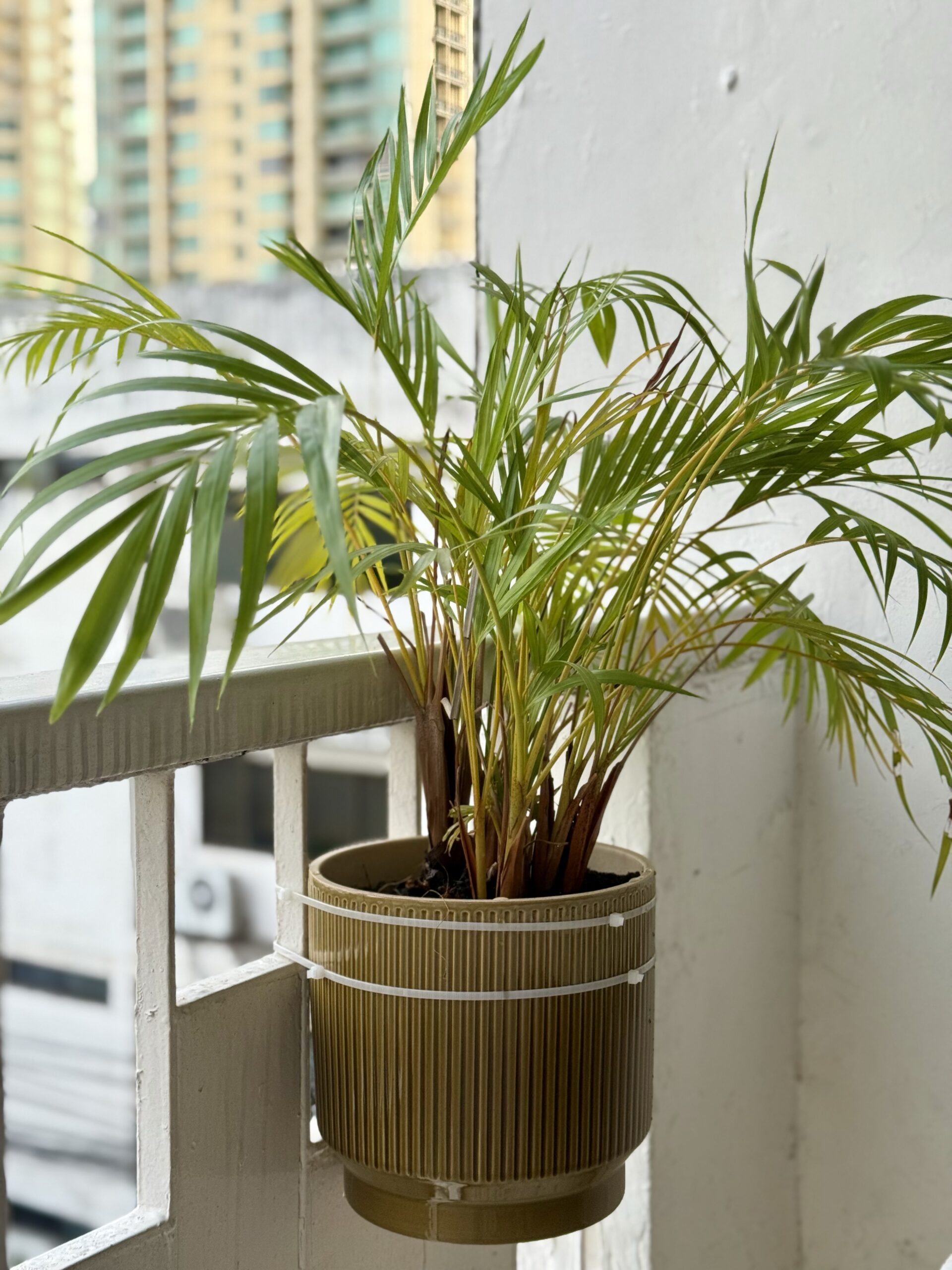
I got it as a gift from our neighbours who were leaving Thailand and I have kept it outside my bedroom window ever since. The sight of its fronds swaying in the breeze is something I look forward to, everyday.
With minimal maintenance and stunning foliage, this plant is an excellent choice for both novice and experienced plant enthusiasts.
I keep this plant in indirect sunlight. It lives in our south-facing balcony in the summers and north-facing balcony in the winters, where it receives sunlight 1-2 hours a day.
The only thing I do for maintenance is clipping dead fronds from time to time. Unlike Gurgaon, there’s not so much dust here, so I don’t mist it often.
I water it thrice a week; less if it has rained.
I fertilise it every 2 months or when it shows signs of growth.
You can read more about this plant here.

